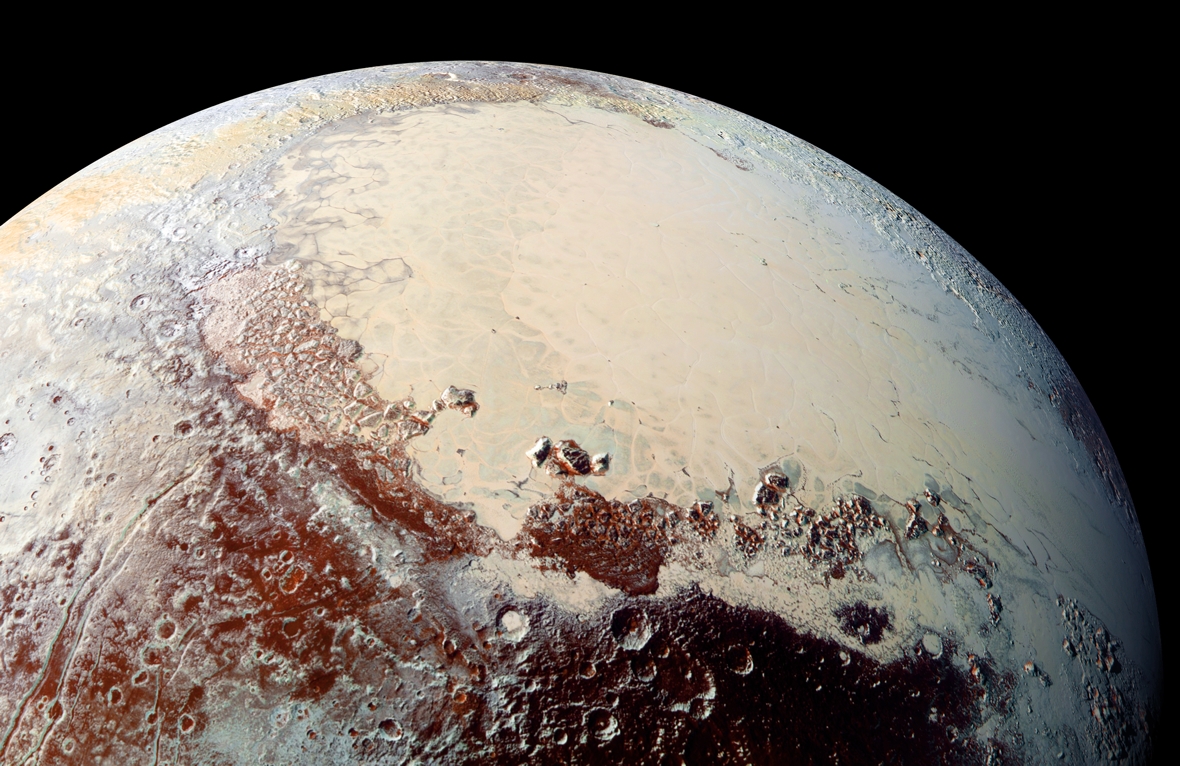Data coming back from New Horizons is revealing amazing new information about Pluto and its moons. Much of this information contradicts previously help theories about the dwarf planet.
The New Horizons probe was launched in 2006 and spent the better part of a decade making its way toward Pluto. According to National Geographic, It came within 7,770 miles of the dwarf planet and sped by at over 30,000 miles per hour as it gathered data and pictures of Pluto and its large moon Charon, as well as smaller moons Nix, Hydra, Styx and Kerberos.
The 50 gigabits of data that was collected during the flyby is expected to take 16 months to download due to the power of the transmitters and size of antenna on New Horizons as well as the 3 billion miles between the probe and scientists on Earth.
A paper published in the journal Science discusses resurfacing evidence that is seen in the new data reports CBS News. Investigators, led by planetary scientist Alan Stern, have determined that tidal forces are not a factor in the resurfacing of Pluto or Charon.
These (tidal forces) are not a viable heat source today for Pluto or (its large moon) Charon.
The researchers question what the power source is for processes which seem to have affected Pluto’s bedrock. They believe that geological processes — some of which occurred recently — are responsible for a newly discovered “heart-shaped area” that is now being deemed the Tombaugh Region. The feature is believed to have been created as these geological processes deformed Pluto’s bedrock, which is rich in water and ice. “This raises questions of how such processes were powered so long after the formation of the Pluto system”, they wrote.
A member of the New Horizons team, planetary scientist William McKinnon, believes that the evidence shows that Pluto has been resurfaced within the last 100 million years but that it would require a heat source other than the sun to do so. It is possible that heat from the decay of radioactive materials in the core could be the source but there isn’t enough evidence right now to know for sure.
Another mystery yet to be solved involved a gas haze that forms around Pluto when its orbit takes it close to the sun as it did in 1989. The gas was expected to freeze but previous observations suggested that it had not yet. Measurements from New Horizons point to the atmospheric pressure being half of what astronomers had calculated.
It will take some time once all the data comes back to Earth to sift through and make sense of it all. There are many questions to not only be answered but also new ones to be asked.

























